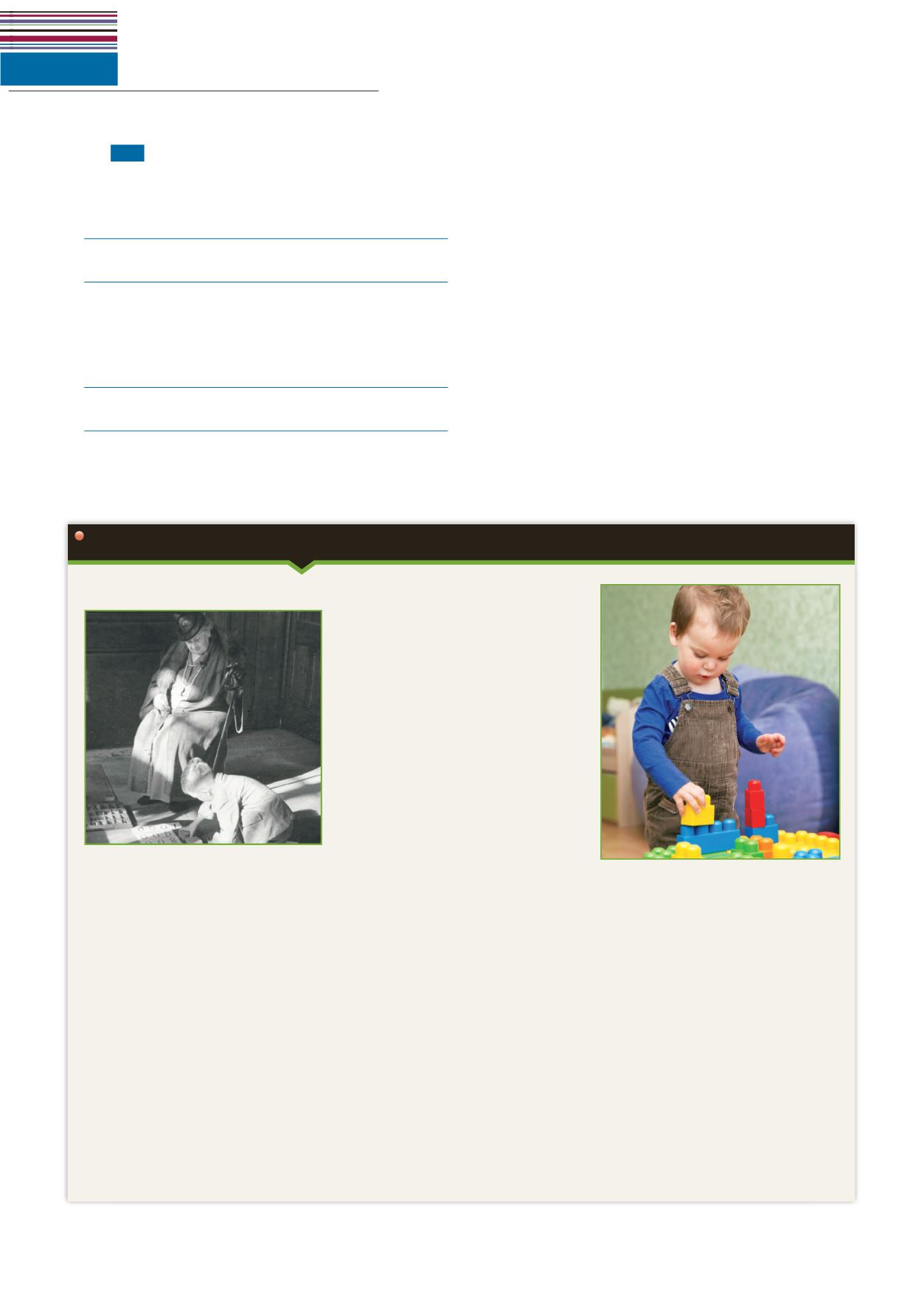
6.2
MONTESSORI
58
LISTENING AND WRITING
1
a
6.2
Listen to a university student talking about a
teacher. Does he say the teacher was good or bad?
1
b
Look at the adjectives in the box. Then listen again
and tick (
ü
) the ones he uses to describe the teacher.
friendly informal easy-going strict punctual
late formal well-prepared interesting
2
Find the words below in Audio script 6.2 on page 169
and underline the phrase they appear in. Try to work
out the meaning from the context. Use your dictionary
to find the meanings of any you do not know.
criticise unique approach pace method
environment
3
Tell your partner about your favourite/worst teacher
at school. Write a short profile (80–100 words) of him
or her. Use Audio script 6.2 on page 169 to help you.
READING
4
a
Read the article and say what the following dates
refer to.
a
1
870
b
1952
c
1896
d
1912
e
1936
4
b
Evaluating a summary
Read the article again and
correct the four mistakes in this summary.
Maria Montessori pioneered a new teaching method after
she graduated as a nurse in 1896, and taught deprived
children. She tried to use everyday objects in the class,
and she wanted the children to develop social skills
with each other and learn to be competitive. She taught
children to experiment and to depend on the teacher, so
that the main role of a teacher is to lead children. Through
her book and her teacher training centres, she helped
spread the method, and today there are many Montessori
schools in Europe and North America.
Maria Montessori
Maria Montessori (1870–1952) is a
famous Italian educationalist whose
method of teaching has influenced
people all over the world.
Born in the province of Ancona, Italy,
in 1870, Montessori became the first
female doctor in her country after she
graduated from medical school in 1896.
Later, working with deprived children,
she set up a ‘Children’s House’ (Casa
dei Bambini) in Rome. This was
the place where she developed the
Montessori Method, an educational
system that encourages an informal
style of teaching. Children learn from
handling everyday materials, and
they develop at their own pace. The
Montessori philosophy is simple.
article discussion edit this page history
The furniture is light so they can arrange
it as they wish, and the cabinets are
low, so the children can reach them.
Because the environment offers a range
of activities, children like to work together,
and they develop a social life based on
cooperation rather than competition.
Maria Montessori travelled all over
the world, training teachers to use her
method, but it was only in her final years
when she established the teacher-
training centres that would take her work
forward. There are now many schools
in Europe and North America which use
the Montessori curriculum and methods.
Children are unique individuals who
must be free to learn without being
criticised or restricted. It is the child
that controls the pace, topic and
lessons, not the rest of the class
or the teacher. As a result, children
enjoy learning, and this gives them
confidence and makes them happy.
The Montessori Method also teaches
children skills to help them become
independent. Very young children
learn to dress themselves, to cook
and to put their toys and clothes
away. Children are encouraged to
repeat activities as often as they wish,
and they develop their observation
skills by doing different activities.
A Montessori teacher observes
children closely in order to provide
them with individual learning
programmes. The teacher is a guide,
not a leader of the classroom, helping
to open students’ eyes to the wonders
around them.
Maria Montessori wanted to free
children’s minds so that they would
learn by self-teaching and self-
correction. It is an approach to
teaching which encourages children
to learn by doing and experimenting.
A typical room in a Montessori school
has many things children can use, for
example, books, objects and games.


